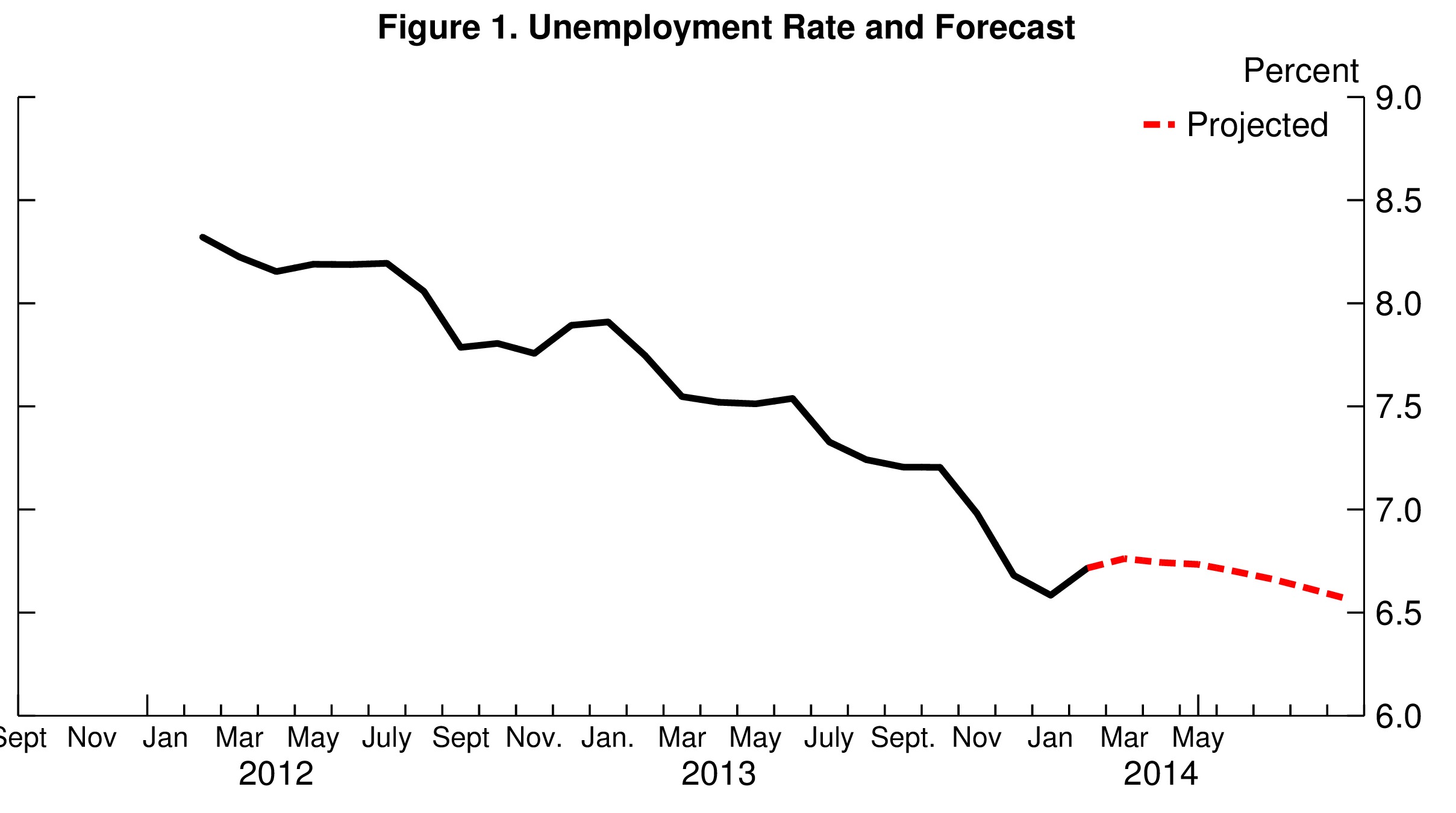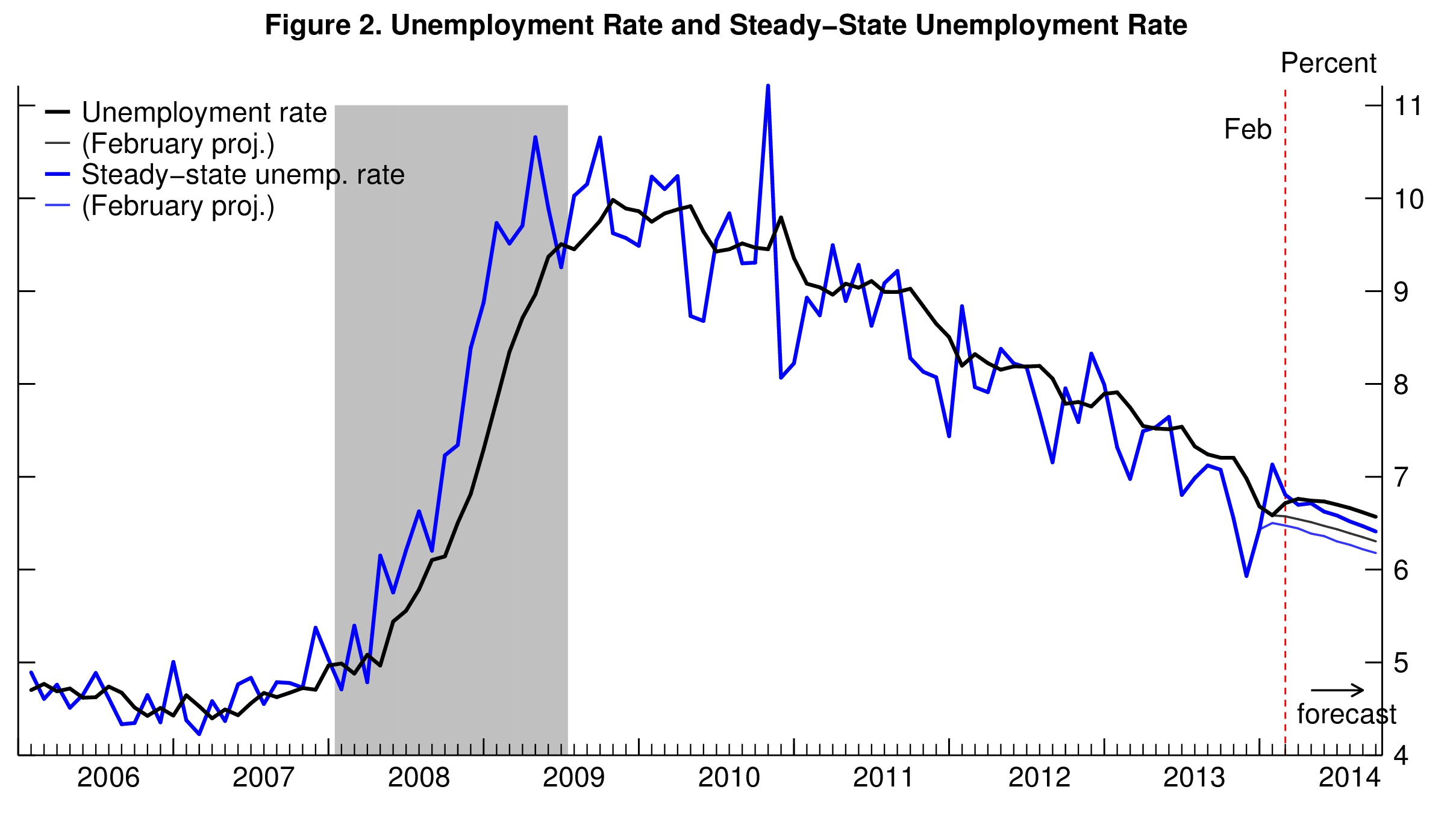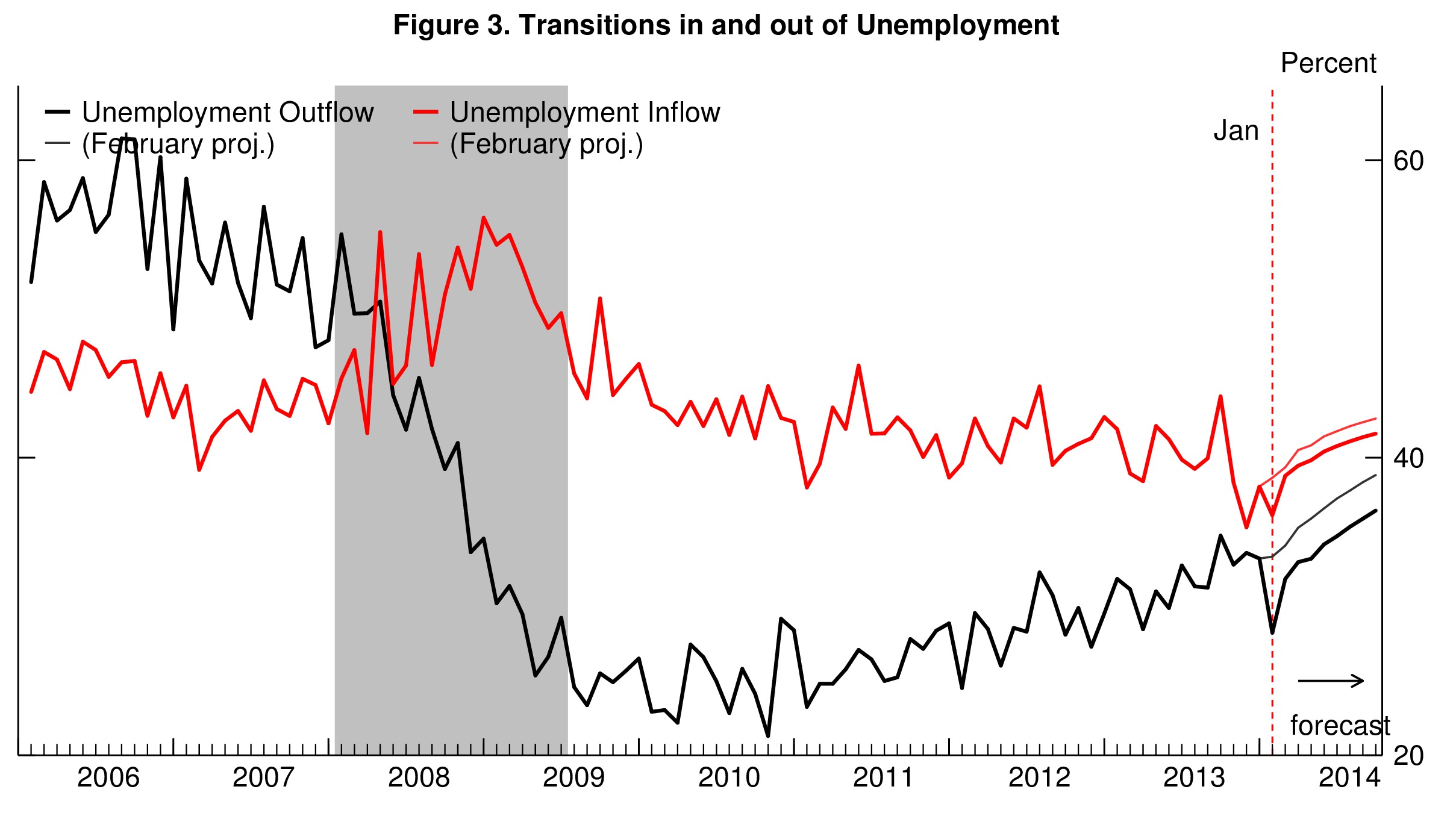This post discusses my monthly update of the Barnichon-Nekarda model. For an introduction to the basic concepts used in this post, read my introductory post (Full details are available here.) In February, the unemployment rate increased to 6.7%, 0.1% higher than I expected. The difference owes to a stronger than expected decline in the unemployment outflow rate. Going forward, this small negative surprise has little impact on the contour of the forecast, and the general message is unchanged: the decline in unemployment has come to a halt, and I anticipate an unemployment rate to remain around 6.7% for the next 6 months.

This model’s forecast can be easily understood by looking at the projected behavior of the “steady-state” unemployment rate. The steady-state unemployment rate, the rate of unemployment implied by the underlying labor force flows—the blue line in figure 2— stands currently at 6.7%, just like the unemployment rate. Our research shows that the actual unemployment rate converges toward this steady state. With a steady-state unemployment rate at the same level as the actual rate, the “steady-state convergence dynamic” that pushed the unemployment rate down steadily during the second half of 2013 is now gone. In other words, the downward momentum in unemployment we observed in the last quarter of 2013 has come to a halt since January. Moreover, the model anticipates the steady-state unemployment rate (SSUR) to decline only very slowly over the coming months (figure 2). With such a slow decline in steady-state unemployment, the gap between the unemployment rate and SSUR will remain negligible and no strong downward momentum will develop. As a result, unemployment will remain roughly steady over the next 6 months; in fact increasing even slightly in March before declining very slowly thereafter –so slowly that it is constant after rounding at the one digit level–.

To forecast the behavior of steady-state unemployment (and hence of the actual unemployment rate), the model propagates forward its best estimate for how the flows in and out of unemployment will evolve over time. The lower than expected unemployment outflow rate in February is carried forward by the model. As a result, the forecast for the transition rate out of unemployment is slightly weaker than as of last month (figure 3), and the level of steady-state unemployment is expected to be slightly higher, with steady-state unemployment going down slowly and reaching 6.5% only in August 2014.


To read more about the underlying model and the evidence that it outperforms other unemployment rate forecasts, see Barnichon and Nekarda (2012).



Commentary
Unemployment Unlikely to Improve Over Next 6 Months
April 1, 2014